Introduction
The QMX is a tiny little multiband, multimode, software defined transceiver, from QRP Labs, that runs at QRP power, roughly 5 watts output. Mine is the “High Band” version covering 6 bands from 20 meters through 10 meters. While designed for CW, various digital modes, and SSB, my interest is (you guessed it) CW.
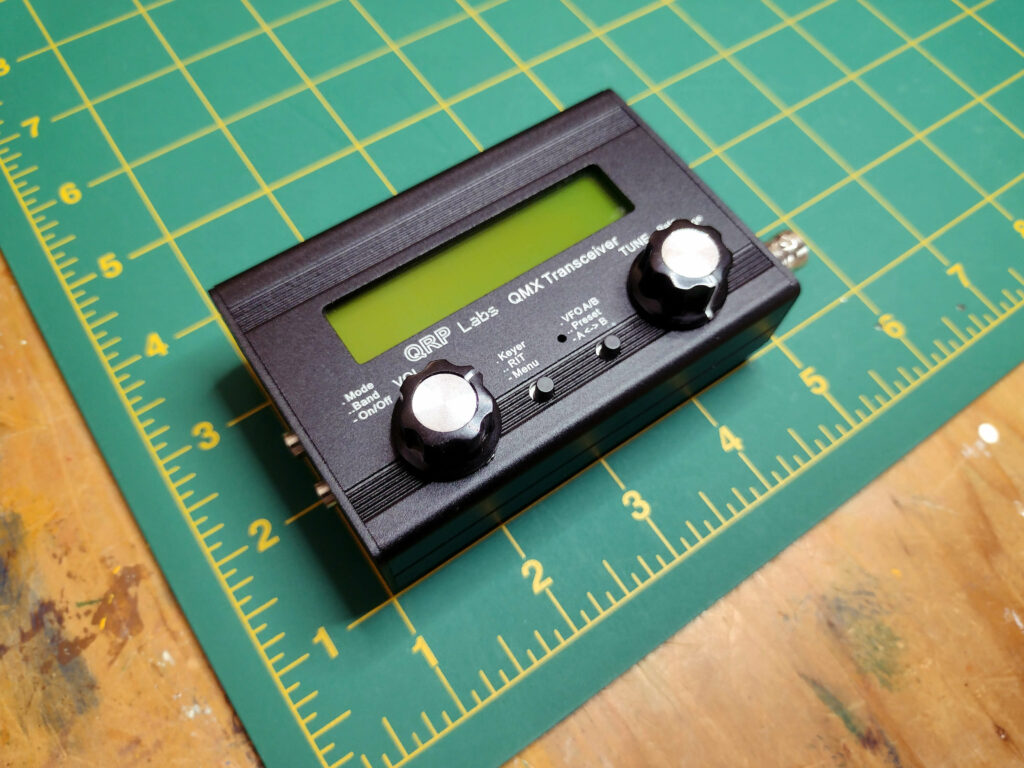
Mine is kit built. I like building things, and building allowed me to acquire a working QMX several months earlier than waiting for an assembled version.
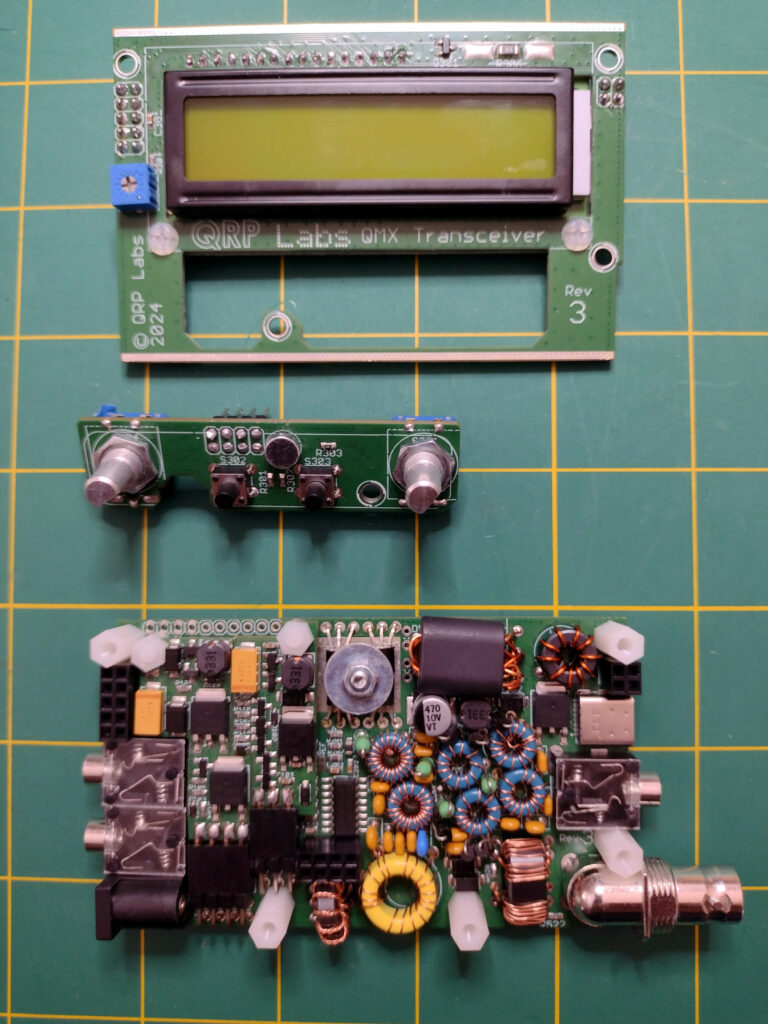
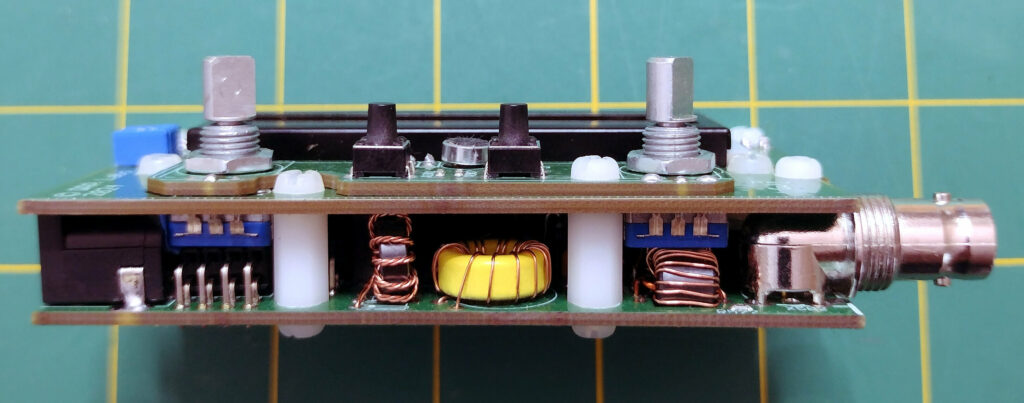
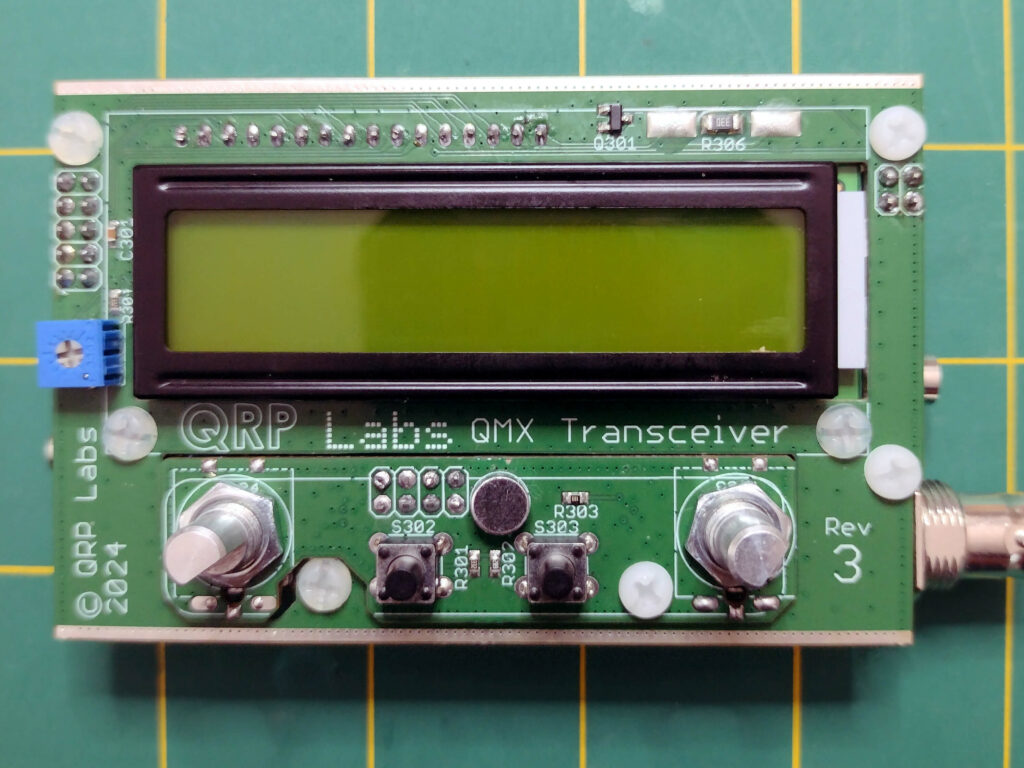
This radio is one version of a series designed by Hans Summers, G0UPL / AF7BF. I am most impressed by how compactly it is packaged. The parts are packed in so densely that successful assembly requires sharp vision, tiny soldering iron tips, and a jewelers loupe. Click on any of the images and then click again to see how dense things are. My successful assembly came by working in small steps and inspecting constantly with that loupe.
Rather than writing more about the technical details of this radio, you might want to read Hans’ own description of how he developed it, a fascinating read for those who like evolution stories.
Assembly done – Let’s start testing
Jul 12, 2024 – At first, I thought it wasn’t getting power correctly.
Yes, the instructions say that when first powered connected PC sees it as a thumb drive. It also says there is nothing displayed. Yet, somehow I still expected ~some~ sign of life and saw none … other than the bench power supply showing about 1/8 A power draw. (I had it set for 7 vDC and .250 A) I also have an inline voltage regulator set for 7 volts. It is extra protection to avoid voltages over 12.0, but set to 7 for initial testing.
Look closer! Yes, there is a drive named “QMX” on the PC. Drag the firmware file, 1_00_020.QMX to that drive. Drop power. Power up again and be greeted by “Initializing EPROM,” and other messages. Voila! It works without emitting smoke.
Next, CONFIGURE and test …
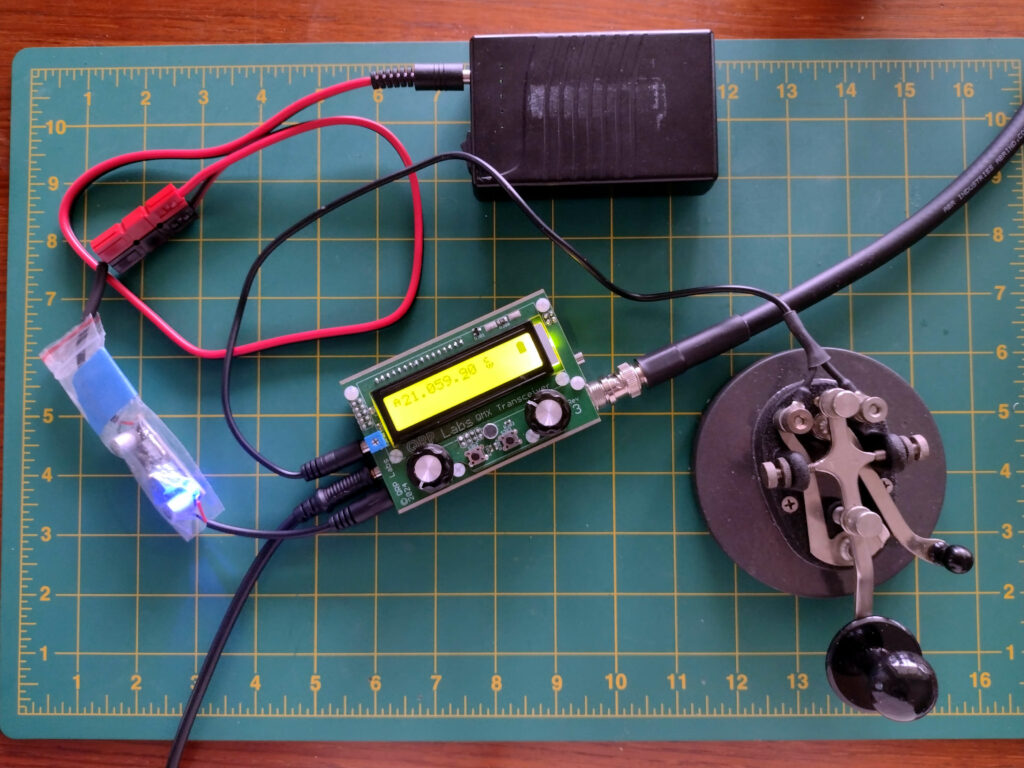
Jul 13 – 2024 – First RX tests: After a round of thunderstorms, I connected the HS20 antenna and listened on 20M for a while. This little rig sounds ~almost~ as good as the TR-45L, but has only one CW filter*, 300Hz, which is a reasonable choice. Its audio is FAR better than the (tr)uSDX with enough amplitude that I don’t need the follow-on audio amp, and no unexpected squealing so far.
*update: More filtering options appear in firmware version 23.
So far, so good. Let’s move up to “normal” input power, 11.7v.
| Band | Power output | Power drawn |
| 20M – 14Mhz | 4.06 watts | 0.582 A |
| 17M – 18 Mhz | 5.61 watts | 0.797 A |
| 15M – 21 Mhz | 5.64 watts | 0.903 A |
| 12M – 24 Mhz | 3.93 watts | 0.743 A |
| 11M – 27 Mhz | 4.05 watts | 0.772 A |
| 10M – 28 Mhz | 3.63 watts | 0.718 A |
Jul 14, 2024 – First quick TX tests (key down for 2 seconds) RF power output was with about 11.7v from a Talentcell battery, RF output goes to my QRPoMeter SWR/PWR meter, then to a dummy load. Power drawn was measured from a bench power supply.
On the air: As of Jul 31, 2024 the QMX has enabled quite a few POTA QSOs. I’m pleased with its performance and use it for those bands the TR-45L doesn’t cover.
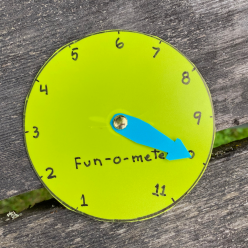
Update: Oct 18, 2024 – Dozens of QSOs have flowed through this little radio. Yesterday, it helped drive the fun-o-meter way above max. That came from a QSO with Paul Butzi, W7PFB out in the woods in Washington state. I parked on his frequency until I started hearing very faint CW. The usual advice is to avoid trying to contact until you’re absolutely certain of 100% copy. I broke that rule, at the 99 and 44/100s mark. (Oldsters will understand the reference.) Thanks to Paul’s sharp ears, we made it work at the 229 RST level. Thanks Paul!
[fun-o-meter image “borrowed” from Paul’s QRZ page.]
Overall, the radio is a joy to use. Hans, the designer, developed a user interface that is very easy to manage, and the radio has the sensitivity and audio characteristics that obviously perform well for weak signal work. As much as people praise the TR-45L for excellent audio, I enjoy the QMX audio more. It seems to have a better SNR than the TR-45L, and recent filter updates have let me move zero-beat and sidetone frequencies to something more pleasant to my hearing.
Next… AK and HI.
Leave a Reply